The journey of textured hair, often a spiral dance of coils and curves, whispers tales of resilience and profound beauty. This is a story etched not only in its outward display but deep within its very structure, a structure that fundamentally shapes its need for sustaining moisture. To truly grasp this necessity, we look beyond surface understanding, venturing into the wisdom passed down through generations, the ancestral knowledge that recognized this vital truth long before modern science articulated it. This exploration invites us into the heart of Roothea’s ‘Soul of a Strand’ ethos, where every curl and every coil holds a memory, a legacy, and a blueprint for its own care.

Roots
The journey into understanding textured hair’s intimate relationship with moisture begins at its very core, with the biological architecture of each individual strand. Imagine, if you will, the hair shaft as a tree—a living, breathing monument to its heritage. Its outer bark, the Cuticle, comprises overlapping, translucent cells, akin to roof tiles, positioned to protect its inner layers.
Beneath this shield lies the Cortex, the hair’s primary bulk, composed of tightly packed protein bundles, the very substance that lends strength and character to each fiber. At the heart, in thicker hair types, resides the Medulla, a soft core of transparent cells and air spaces, though its precise role remains a subject of ongoing study.
For textured hair, particularly the tightly coiled and kinky patterns common among Black and mixed-race individuals, the arrangement of these cuticular scales holds a distinct significance. While all hair types possess these protective scales, textured hair often exhibits a natural tendency for its cuticle to be more lifted or open, due to the very nature of its helical, often elliptical, cross-sectional shape. This inherent openness creates a pathway for moisture to enter the strand, but regrettably, it also presents a more straightforward escape route for that same hydration.
The strand’s bends and twists, while visually striking, also create points where the cuticle can be more exposed, leading to greater vulnerability to environmental influences and moisture loss. This physical reality underscores the profound, continuous need for external moisture that defines the care of textured hair.

Ancestral Wisdom and Hair’s Architecture
Long before microscopes unveiled the intricate layers of the hair shaft, ancestral communities across Africa and the diaspora possessed an intuitive, profound understanding of hair’s moisture requirements. Their practices, honed over centuries, reflected a deep awareness of how hair responded to its environment and the substances applied to it. Consider the Himba women of Namibia, whose tradition of coating their hair and skin with Otjize—a rich paste of butterfat and ochre—serves as a compelling testament to this ancestral wisdom. This mixture not only offers physical protection from the sun’s harsh rays but also seals in vital moisture, preserving the hair’s integrity in an arid climate.
Such traditions were not random acts; they represented living sciences, passed through the communal touch of hands, each application a lesson in environmental adaptation and self-preservation. The knowledge of which plants yielded the most nourishing oils, which butters offered the most enduring seal, and which styling practices safeguarded the hair from desiccation, was central to communal well-being and identity. This rich legacy speaks to an understanding of hair’s needs that transcended mere aesthetics, grounding it firmly in survival and cultural continuity. The methods employed were often laborious, yet they were acts of reverence, recognizing the strand’s inherent thirst and responding with profound care.
The ancient wisdom of textured hair care, long predating modern science, recognized the innate need for protective moisture through centuries of practice.
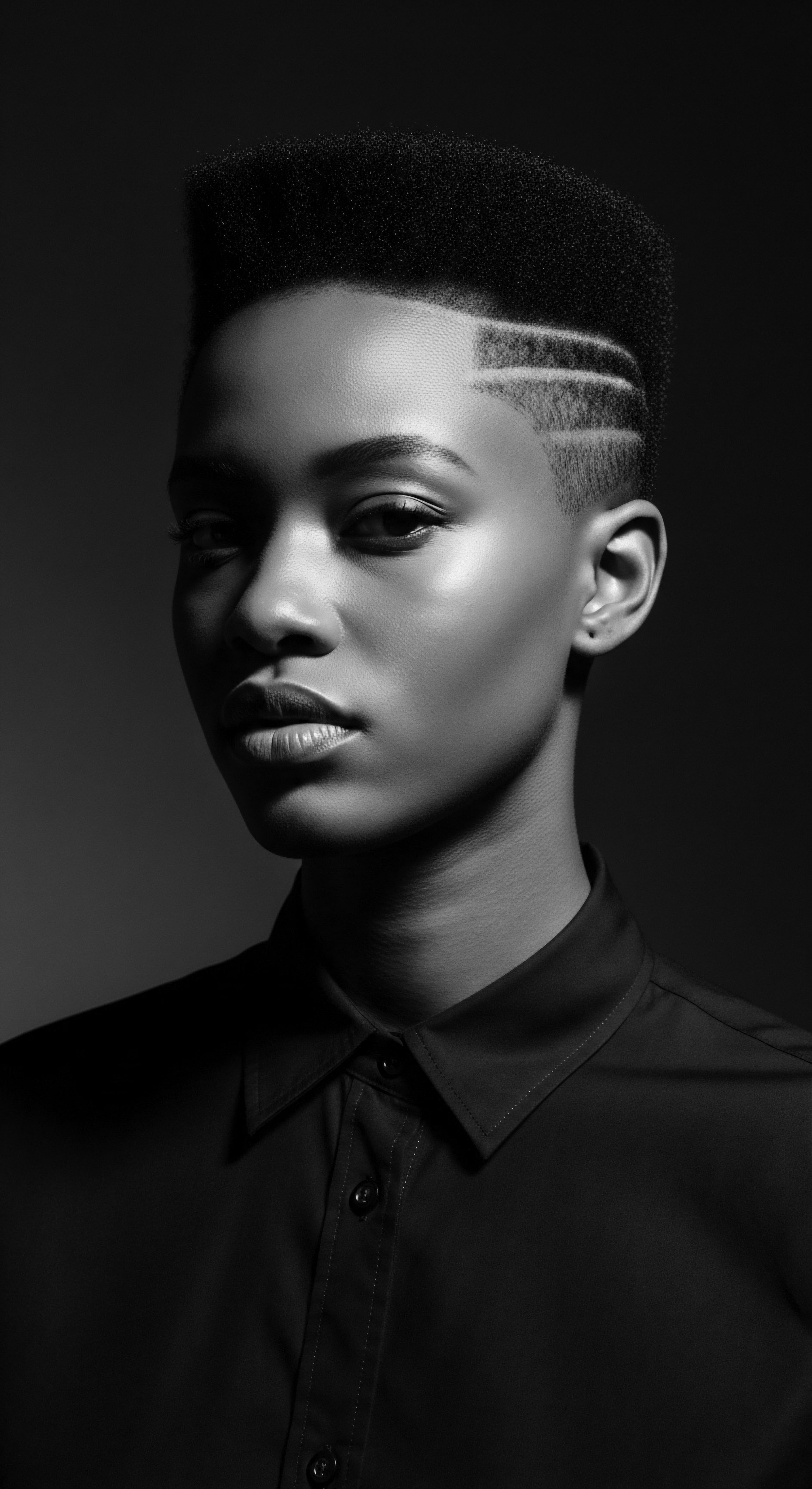
The Lipid Landscape of Textured Hair
Beyond the architectural nuances of the cuticle, the very chemical composition of textured hair plays a significant role in its moisture dynamics. Research indicates that textured hair, particularly Afro-textured hair, possesses a relatively higher overall lipid content compared to other hair types. These lipids, or fatty molecules, are integral to the hair shaft, acting as a natural barrier.
One might assume a higher lipid content would equate to greater moisture retention. However, studies point to a more complex reality. While Afro-textured hair has more lipids, these lipids often exhibit a highly disordered arrangement, particularly in the cuticle. This disordered structure can contribute to a higher water vapor diffusion rate, meaning that while water might enter, it also leaves quite readily.
This paradox underscores why textured hair, despite its inherent lipid richness, is frequently characterized as dry or very dry. The lipids are present, yet their organization, combined with the hair’s coiled structure, creates a distinct hydration challenge. It speaks to a subtle interplay of biology and environment, where the hair’s natural defenses require reinforcement from consistent external moisture.
| Region of Origin West Africa |
| Ancestral Ingredient Shea Butter (Karité) |
| Traditional Application for Moisture Melted and massaged into hair as a sealant and softener, protecting against environmental elements. |
| Region of Origin Central/Southern Africa |
| Ancestral Ingredient Marula Oil |
| Traditional Application for Moisture Applied for shine and moisture, also for skin repair and protection from sun. |
| Region of Origin East Africa |
| Ancestral Ingredient Qasil Powder (from Gob tree leaves) |
| Traditional Application for Moisture Used as a cleanser and treatment, often combined with water for a moisturizing wash. |
| Region of Origin North Africa |
| Ancestral Ingredient Argan Oil |
| Traditional Application for Moisture Applied as a hair oil to add softness and a protective layer. |
| Region of Origin These ancestral practices showcase a deep, intuitive understanding of how natural lipids can support textured hair's moisture needs. |
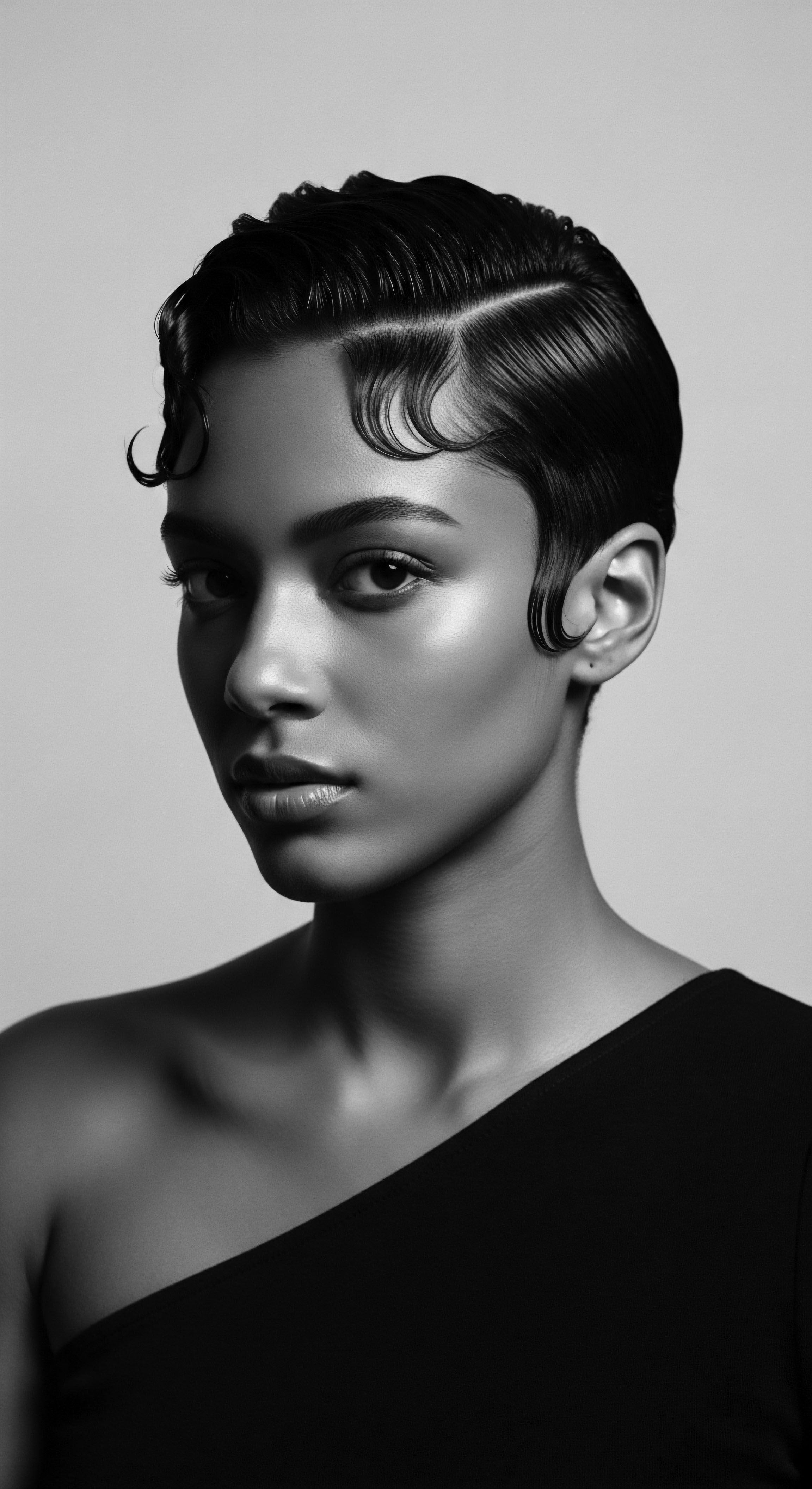
Ritual
The intricate structure of textured hair, with its inherent inclinations toward moisture release, naturally gives rise to rituals of care that are both deliberate and deeply rooted in tradition. These practices extend far beyond mere cleanliness; they embody a profound interaction with the strand, a conversation between biology and ancestral knowledge. When we consider how textured hair’s structure influences its need for moisture, we inevitably arrive at the time-honored customs of washing, conditioning, and sealing—each step a purposeful gesture aimed at preserving the hair’s vitality.
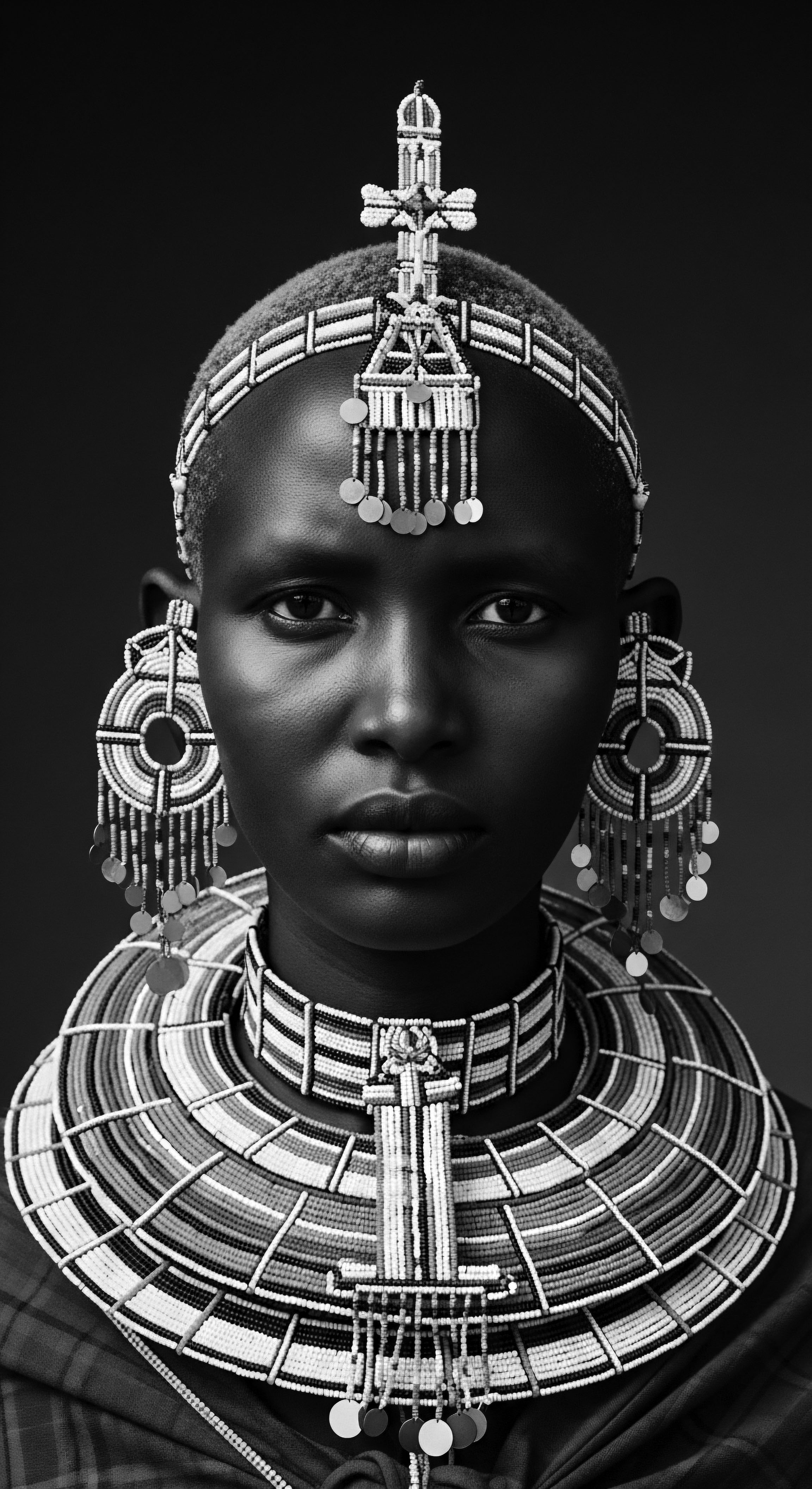
Washing and Cleansing ❉ A Delicate Balance
Cleansing textured hair requires a nuanced approach, one that respects its innate need for moisture. Traditional practices often utilized gentle, natural cleansers that purified without stripping the hair of its essential oils. Consider the use of African Black Soap (Ose Dudu), originating from West Africa. This traditional soap, often made from plantain skins, cocoa pods, and shea butter, provided a mild yet effective cleanse.
It contrasted sharply with harsh, modern cleansers that could leave textured hair feeling parched and brittle, exacerbating its natural tendency for moisture loss due to its more open cuticle layers. The wisdom held that a truly clean scalp and hair meant a nourished one, not a denuded one, acknowledging the delicate lipid barrier. This contrasts with the contemporary emphasis on frequent, aggressive lathering which can disrupt the hair’s natural moisture balance, particularly for a hair type already prone to dryness. Many Black families still follow a tradition of infrequent washing, often weekly or bi-weekly, precisely to preserve moisture.

The Art of Conditioning ❉ Replenishing What is Given
After a gentle cleanse, the true art of moisture infusion begins. The conditioner, whether a rinse-out or leave-in, becomes an act of restitution, returning what the elements might have taken. The curvilinear nature of textured hair, with its many twists and turns, means that natural sebum produced by the scalp struggles to travel down the entire length of the hair shaft. This leaves the mid-lengths and ends particularly vulnerable to dryness.
This biological reality made conditioning a central, rather than supplementary, step in ancestral care. Women across the diaspora instinctively employed emollients and humectants long before these terms entered scientific discourse.
Traditional hair care rituals, such as the mindful use of natural emollients, offer timeless blueprints for textured hair’s essential moisture requirements.
- Shea Butter ❉ Revered across West Africa, shea butter has served for centuries as a conditioning agent. Its rich fatty acid profile provides intense moisture and acts as a natural sealant, coating the hair shaft to reduce water evaporation.
- Coconut Oil ❉ Widely adopted across Africa, coconut oil is celebrated for its distinctive molecular structure, which allows it to penetrate the hair shaft more effectively than many other oils. This property makes it an ideal choice for internal hydration and protein-sensitive hair.
- Red Palm Oil ❉ Employed in Central and West Africa, this oil provides deep hydration and protection from environmental damage, rich in beta-carotene and antioxidants.
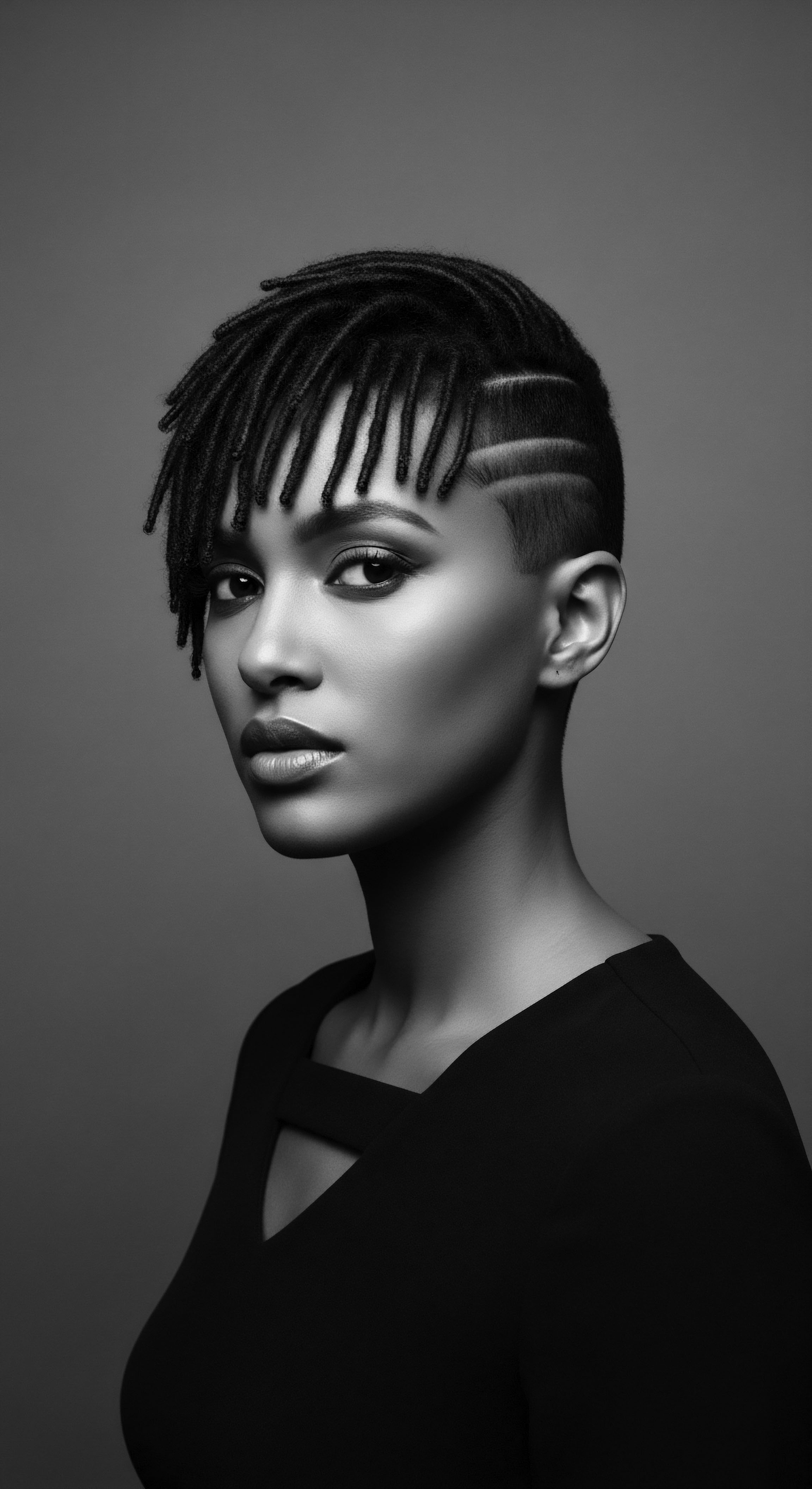
Protective Styles ❉ Guardians of Hydration
The practice of protective styling, deeply interwoven with the heritage of Black and mixed-race communities, extends beyond aesthetics or cultural expression. It is a fundamental strategy for moisture preservation. Braids, twists, and cornrows, ancient in their origins, serve to minimize external exposure, reduce mechanical manipulation, and thereby limit moisture evaporation from the hair shaft. Each intricate plait is a deliberate act of safeguarding.
These styles kept hair organized and contained, helping to trap the moisture applied during the care process. The longevity of such styles meant less frequent manipulation, allowing the hair to rest and retain its hydration for extended periods.
Consider the historical context ❉ in various African societies, hairstyles conveyed significant social information—status, age, marital state, or tribal identity. The durability of many traditional styles was crucial for communities on the move, engaged in agriculture, or facing challenging climates. The protective aspect was thus a functional necessity, seamlessly integrated into a living art form.
The ritual of braiding, often a communal affair, simultaneously reinforced social bonds and secured the hair’s moisture. This communal aspect, mothers braiding daughters’ hair, friends assisting one another, created a shared repository of knowledge concerning the best techniques for moisture retention within these intricate designs.
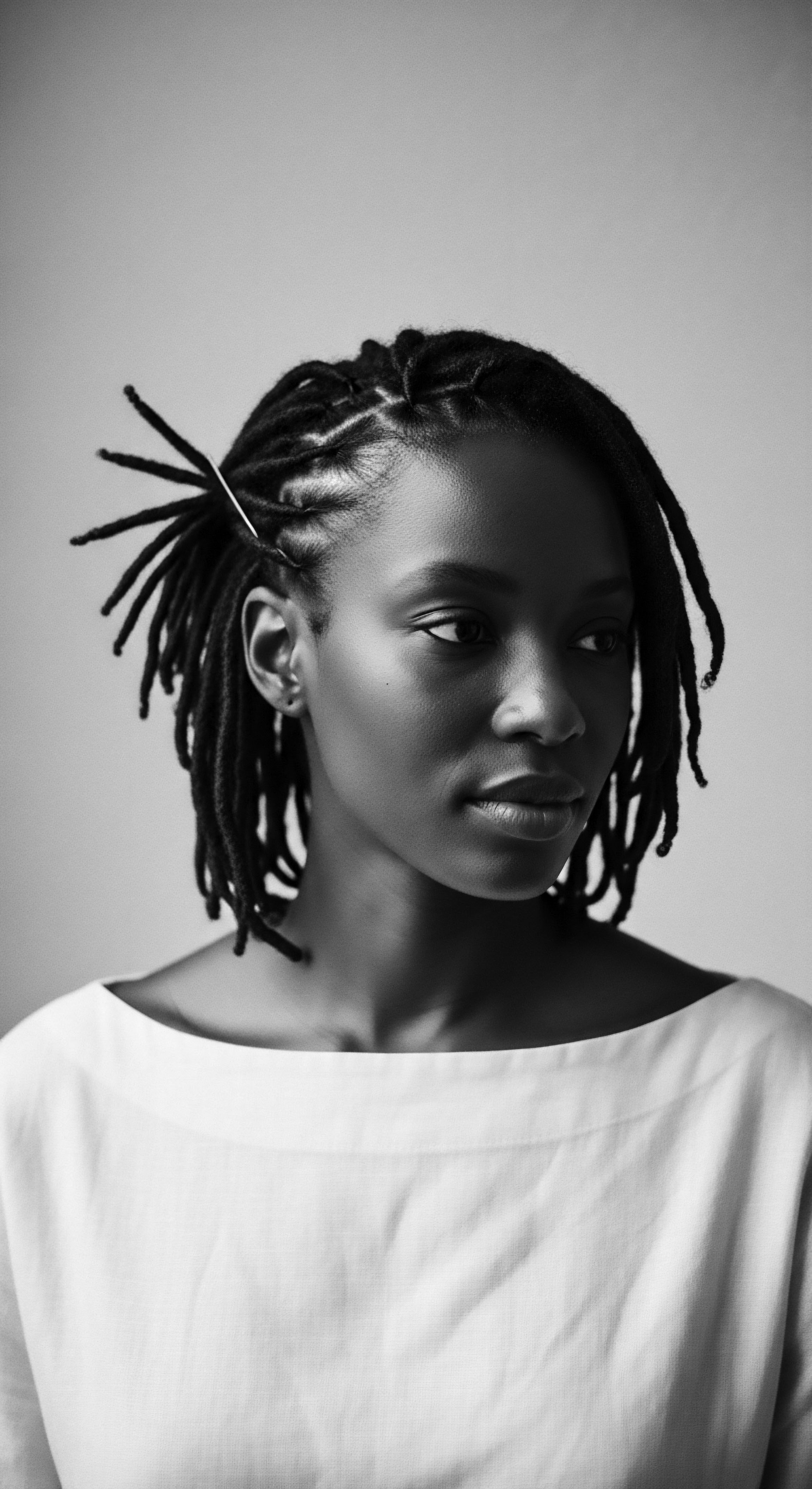
How Do Ancestral Practices Align With Modern Hair Science on Moisture?
The alignment between ancestral hair care practices and modern scientific understanding of moisture’s influence on textured hair is striking. Ancestors intuitively understood the principles of humectants, emollients, and occlusives, long before these terms were coined. Humectants, such as aloe vera or honey (often combined with other ingredients), draw moisture from the environment into the hair shaft.
Emollients, like the various plant oils and butters, soften the hair by filling gaps in the cuticle. Occlusives, essentially the heavier butters and waxes, then seal that moisture within the strand, forming a protective barrier.
The layering of these natural ingredients in traditional regimens—perhaps a water-based herb infusion followed by a rich butter or oil—mirrors the modern “LOC” (Liquid, Oil, Cream) method, a testament to enduring principles of hydration. This synchronicity suggests a continuous lineage of knowledge, where ancient wisdom finds validation in contemporary scientific findings. The cyclical nature of these rituals, performed with intention and often communally, reinforced the delicate balance required to maintain healthy, moisturized textured hair.
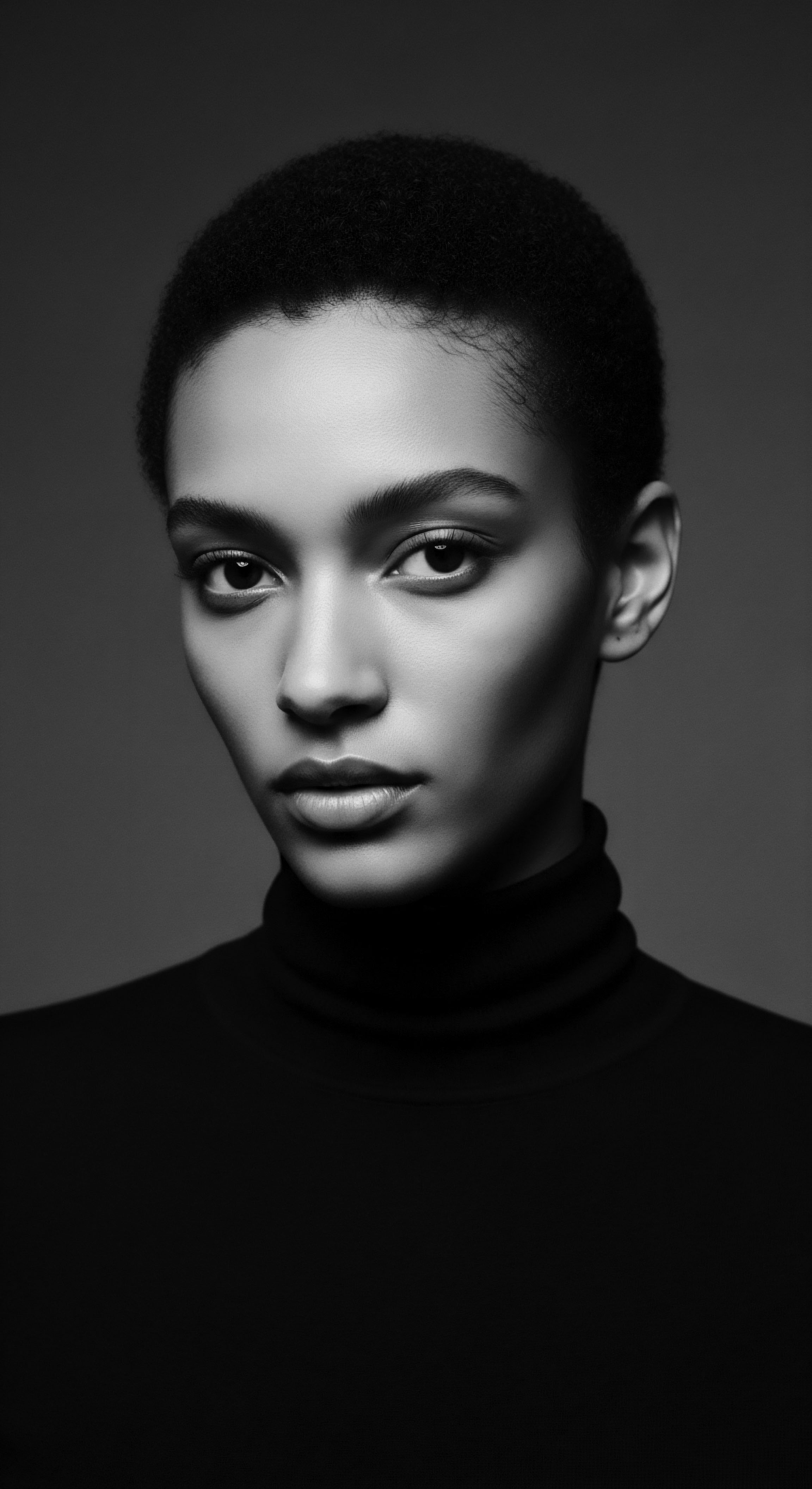
Relay
The enduring wisdom of textured hair care, passed through generations, carries within it a scientific narrative. The particular structure of textured hair demands a continuous relay of moisture, a dynamic interplay between internal conditions and external applications. This understanding, once gleaned from empirical ancestral practice, now finds validation and deeper insight through the lens of modern trichology and molecular biology. The distinct morphological characteristics of textured hair – its curvature, elliptical cross-section, and often more open cuticle layers – collectively dictate a unique hydration imperative.

Why Does the Coil Release Moisture?
The coiling pattern, while visually captivating, means that natural scalp oils, known as Sebum, struggle to travel down the entire length of the hair shaft. On straight hair, sebum can glide down with relative ease, offering a natural coat of protection. For a tightly coiled strand, however, the journey is interrupted by constant bends and twists.
This leaves the mid-shaft and ends of textured hair particularly vulnerable to dryness, as they receive minimal natural lubrication. This inherent structural limitation is a core reason why consistent external moisturizing becomes not a luxury, but a fundamental act of care for textured hair.
Beyond sebum distribution, the cuticle of textured hair plays a significant role in moisture dynamics. While the cuticle’s primary function is protection, the natural bends and twists in textured hair can cause its individual scales to lift more readily. When these cuticle scales are raised, the hair becomes more susceptible to moisture loss through evaporation.
This characteristic is directly tied to hair Porosity, which is the hair’s ability to absorb and retain moisture. Textured hair frequently exhibits higher porosity, meaning it absorbs water quickly but also releases it just as fast.
Consider a study by Laing, published in the Journal of Cosmetic Science (2007), which noted that the unique geometry of textured hair creates a greater surface area relative to its volume compared to straight hair. This increased surface area, along with the tendency for cuticle lifting at points of curvature, enhances the rate of water evaporation from the strand. This subtle yet significant difference in surface topography contributes substantially to its constant need for external hydration. The very design of the helix, while beautiful, necessitates a vigilant approach to moisture retention.

How Do Humectants, Emollients, and Occlusives Maintain Hydration?
The sophisticated interplay of humectants, emollients, and occlusives mirrors ancestral practices of layering natural ingredients. Modern science defines these categories by their specific mechanisms of action, offering a precise vocabulary for the intuitive wisdom of generations past.
- Humectants ❉ These are compounds that draw water from the air or from deeper layers of the skin (scalp) into the hair shaft. Ingredients like Glycerin, honey, aloe vera, and hyaluronic acid act as moisture magnets. They are vital for directly introducing hydration to dry textured hair.
- Emollients ❉ Rich in lipids, emollients smooth the hair’s surface by filling gaps between the cuticle cells, thereby improving flexibility and softening the strand. Ingredients such as Shea Butter, mango butter, and various plant oils (like olive oil or avocado oil) fall into this category. They do not primarily add water but rather help the hair retain it and feel softer.
- Occlusives ❉ These heavier substances form a protective barrier on the hair’s surface, sealing in moisture and significantly reducing trans-epidermal water loss. Examples include heavier butters (like unrefined shea butter or cocoa butter), waxes, and some oils like Castor Oil. They act as the final lock, ensuring the hydration brought in by humectants and emollients remains within the hair.
The ancestral layering of water-based infusions with oils and butters perfectly aligns with this scientific understanding. The water provided by the infusion would act as a humectant, the plant oils as emollients, and the heavy butters as occlusives. This systemic approach, applied with careful intention, allowed communities to manage the moisture requirements of their hair despite challenging environmental conditions.
The structural characteristics of textured hair lead to its unique moisture needs, validating centuries of ancestral care practices.
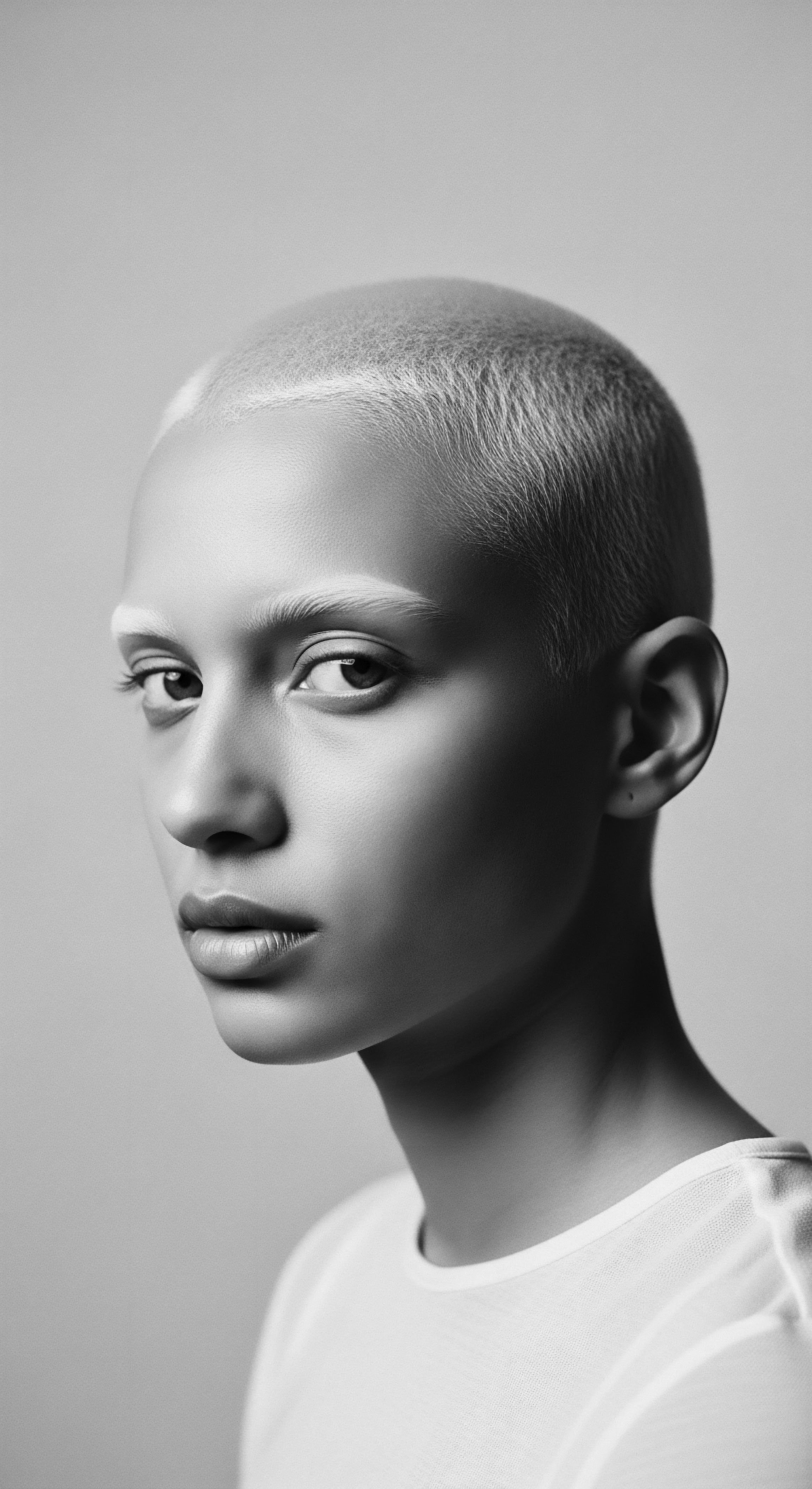
Environmental Influences and Ancestral Adaptation
The varied climates across Africa, from arid deserts to humid rainforests, played a significant role in shaping hair care practices and influencing hair’s structural adaptations. Ancestral communities developed highly specialized regimens to contend with their specific environments. In hot, dry climates, the emphasis was heavily on sealing in moisture and protection from sun damage—leading to the prevalent use of heavy butters and protective styles. In more humid regions, the challenge shifted to managing swelling and frizz, while still prioritizing hydration.
This deep, localized understanding of climate and hair interaction formed a part of the living heritage. For instance, the traditional use of Baobab Oil in central and southern Africa speaks to its properties that protect against dryness and environmental stressors, while Qasil powder in East Africa served as both a cleanser and a treatment, indicating a focus on both scalp health and hair conditioning in a dry environment. The ingenuity of these adaptations provides a powerful lesson in how human communities, over millennia, have cultivated knowledge that directly addresses the unique needs arising from textured hair’s structure. This living archive of hair care strategies is a testament to human resilience and acute observation.
| Porosity Type Low Porosity |
| Cuticle State & Moisture Interaction Tightly closed cuticle, resisting water absorption but also retaining moisture once absorbed. |
| Heritage-Informed Care Approach Warm treatments (e.g. heated towels with conditioners), lighter, water-based emollients to encourage absorption. This parallels ancient steam practices. |
| Porosity Type Medium Porosity |
| Cuticle State & Moisture Interaction Balanced cuticle, absorbs and retains moisture well. |
| Heritage-Informed Care Approach Balanced routine, consistent hydration, and light-to-medium occlusives. Reflects general care with varied natural ingredients. |
| Porosity Type High Porosity |
| Cuticle State & Moisture Interaction Open or raised cuticle, absorbs water quickly but loses it rapidly. Can be inherent or due to damage. |
| Heritage-Informed Care Approach Emphasis on sealing agents (heavier butters, thicker oils), protein treatments, and protective styles to minimize loss. This strongly mirrors traditional heavy oiling and braiding practices. |
| Porosity Type Understanding hair porosity provides a scientific lens through which to appreciate and adapt ancestral moisturizing practices for contemporary needs. |

Reflection
The journey through the very substance of textured hair, its ancestral care, and the validating science behind its thirst for moisture, brings us to a profound quiet space ❉ a reflection on the enduring spirit of a strand. Each coil, each bend, holds not only keratin and lipids but also generations of narrative, of resilience, of beauty cultivated against all odds. The consistent requirement for moisture in textured hair, stemming from its intricate helical design and distinctive lipid patterns, is not a deficit but a profound call to attentiveness, a continuous dialogue between the self and the hair that crowns it. This call echoes the ancient practices, the tender touch of communal hands applying precious oils and butters, all in recognition of hair’s living needs.
The very routines born from structural necessity became rituals of identity, resistance, and self-possession. To understand this deep biological imperative is to connect with a legacy of care that transcends time, reaching back to sun-drenched landscapes where ingenuity and natural wisdom guided every hand. The future of textured hair care, then, remains rooted in this foundational understanding ❉ that listening to the strand, honoring its heritage, and supplying its fundamental need for moisture is a continuous act of self-love and cultural affirmation.

References
- Laing, W. (2007). Hair Damage and Its Measurement. Journal of Cosmetic Science, 58(2), 173-194.
- Byrd, A. D. & Tharps, L. D. (2014). Hair Story ❉ Untangling the Roots of Black Hair in America. St. Martin’s Griffin.
- Mbilishaka, O. (2018). Afro-Textured Hair & PsychoHairapy ❉ A Primer for Mental Health Professionals. Lulu.com.
- Robins, M. (2012). Afro-textured Hair ❉ A Study on Black Hair Care, Chemistry, and Culture. CreateSpace Independent Publishing Platform.
- Giacomoni, P. U. (2015). Hair and Hair Care. Springer.
- Draelos, Z. D. (2010). Hair Cosmetics ❉ An Overview. Clinical Dermatology, 28(4), 369-373.
- Khune, R. & Sarma, H. N. (2012). Hair Care and Cosmetics ❉ A Comprehensive Guide. Scientific Publishers.
- Douglas, A. Onalaja, A. A. & Taylor, S. C. (2020). Hair care products used by women of African descent ❉ review of ingredients. Cutis, 105(4), 183-188.
- Lebrun, E. et al. (2017). Hair Lipid Structure ❉ Effect of Surfactants. Cosmetics, 4(3), 29.
- Robins, M. K. et al. (2006). African Hair ❉ A review of the effects of its structure on cosmetic products and styling practices. Journal of Cosmetic Science, 57(5), 379-389.
